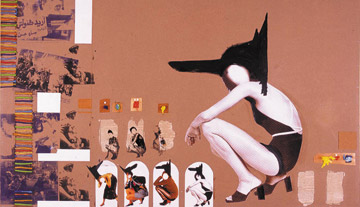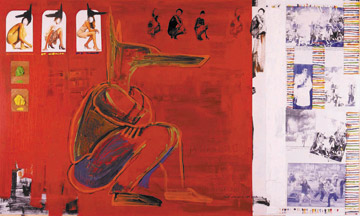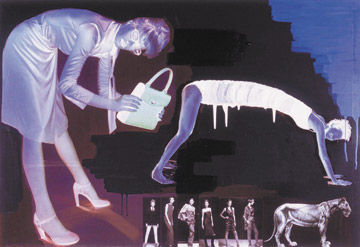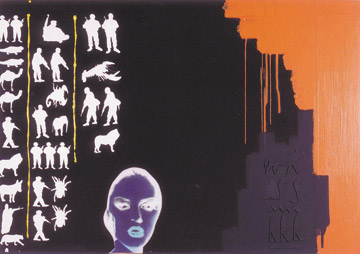The President’s Necktie
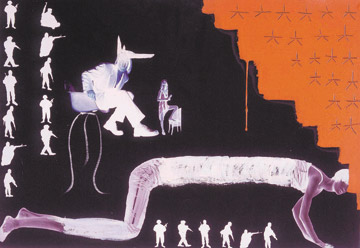
| Marilyn, the president’s necktie and batman undressing to go to bed This project is the day-to-day progress in my research of the iconography of a metamorphosing universal contemporary identity, despite the diversity and specificity of cultures and heritage of each region I lived in or visited in the past decade. It is certain that throughout history, iconographies continuously mingled in a cumulative process of cross-fertilization and cross-influence; this phenomenon is found more today than any other time in the past, due to the nature of open-skies, parabolic satellites, mass media, universal communication, and freedom of access to all/any information. I personally believe that this process of cross-influence is not just a linear process in which certain elements are used beside each other or in sequence to express an idea; the use of the historical references may denote not only time (history) but also the cultural specificity of a place (space); this versatile significance combined with the use of today’s technology of image transfer like photography, video, printing and collage renders the creative process extreme sophistication that transcends space and time. For the past ten years I have been using collage and image transfer techniques to juxtapose images of East and of West, searching all the time for tangential points, areas of similarities and differences, trying continuously to find/create a language capable of representing ideas legible to both East and West. In my research I try to bridge between both cultures to attain a synergy of power for both languages to move together forwards rather than to clash if movement is in opposite direction. In my previous work as in my current project Marilyn, the president’s necktie and batman undressing to go to bed I try to probe the sacred versus the commercial, the permanent versus the ephemeral, the established versus the experimental, while applying at the same time a continuous process of revisionism to contemporary art history; for the latter I re-interpret master paintings of artists like Kazimir Malevich, Andy Warhol, Jasper Jones, Joseph Kosuth Magritte; paintings that became icons/references of contemporary visual education. In my work Batman (consumer goods advertising mass media icon) features alongside Anubis, the God of the deceased/cemeteries and mummification (symbolizing the sacred). It is beyond any coincidence that when we look at a small model/statuette of both Batman and Anubis from the front or from the back we find them identical, the only difference is in profile. The contemporary super hero has the mask of an animal and the musculature of a perfect man, just like scared ancient Egyptian Gods. It is beyond coincidence that both super heroes assume similar function that is “protection of the body against the evil”. And it is certainly beyond coincidence that ancient Egyptian painting was very two-dimensional as opposed to the stupendous three-dimensional sculpture that exceeds perfection. The reason for that is that ancient Egyptian paintings were ONLY meant for their narrative, and not to overlook the narrative to appreciate painting aesthetics; two dimensional ancient Egyptian painting is thus the first known comic strips in history; after all, comic strips are expressive two-dimensional paintings with texts to confirm the action in the drawing; both texts and drawings confirmed each other. Comic strips patterns are thus the most effective tool for communication in history, a tool capable of containing elements of cultural similarities, transcending along the way both space and time. In my current mixed media works, I am also interested in movement, an element that was indispensable in ancient Egyptian painting, where all painted elements were in motion, as opposed to Egyptian sculpture that always caught the protagonists in a “pose”, nearly always static. In contemporary culture dominated by a century of film and animation, the similarity between these ancient and contemporary forms of the kinetic is intriguing to me, and a focal aspect of my research. The interpretation of master paintings on parts of the surfaces intermingling with other hybrid neo-Egyptian iconography is a process not an end result; I let paint leak from the far-from-perfect interpretation, I use ancient Egyptian stars in the Jasper Jones flags, I use images of Nasser in Andy Warhol-like backgrounds, I use a blue which is not Yves Klein’s, I use a cup of cappuccino instead of an apple to cover the face of Magritte’s portrait. The objective to try to tackle the visual memory of the viewer, and give adequate imperfections that succeed easily in giving the same effect as the original near-sacred museum pieces. Khaled Hafez, 2002 |
